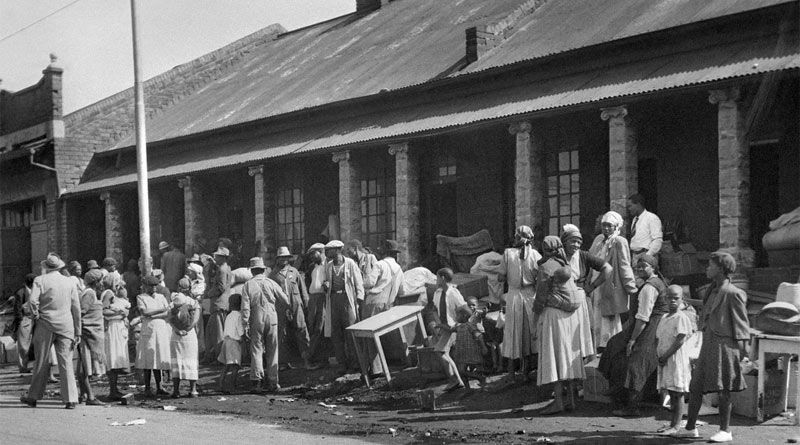Introduction:
The Group Areas Act, a legislative framework that shaped the socio-political landscape of South Africa for decades, remains a topic of historical significance and scholarly exploration. Enacted in 1950 as part of the apartheid system, the Act enforced racial segregation, designating specific areas for different racial groups. As we delve into the intricacies of the Group Areas Act, it is essential to pose critical questions that unravel its historical context, impact on communities, and enduring legacy. This article explores 10 pertinent questions about the Group Areas Act and provides insightful answers to foster a deeper understanding of this pivotal period in South African history.
What was the Group Areas Act?
The Group Areas Act of 1950 was a cornerstone legislation of the apartheid regime in South Africa. Its primary objective was to institutionalize racial segregation by assigning specific residential areas to different racial groups. The Act aimed to create distinct zones for Whites, Blacks, Coloureds, and Indians, perpetuating the racial hierarchy and reinforcing the notion of racial purity.
How did the Group Areas Act impact communities?
The Act had a profound impact on communities, tearing apart the social fabric that had been woven over generations. Families were forcibly relocated based on their racial classification, leading to the forced removals of entire communities. This resulted in the destruction of established neighborhoods, cultural disintegration, and the displacement of countless individuals who were uprooted from their homes and familiar surroundings.
Were there any resistance movements against the Group Areas Act?
Resistance against the Group Areas Act was a crucial aspect of the broader anti-apartheid struggle. Various groups, including activists, community leaders, and religious organizations, vehemently opposed the forced removals and racial segregation. The African National Congress (ANC) and other anti-apartheid organizations played a significant role in mobilizing resistance, organizing protests, and advocating for international condemnation of the apartheid regime.
How did the Act impact the urban landscape?
The Group Areas Act reshaped the urban landscape by creating racially segregated residential areas. Cities and towns were divided into distinct zones, each allocated to a specific racial group. This division not only disrupted existing neighborhoods but also led to the establishment of impoverished and marginalized townships for non-White communities. The physical separation of races further exacerbated social and economic inequalities.
Did the Group Areas Act extend beyond residential segregation?
Yes, the impact of the Group Areas Act extended beyond residential segregation. The legislation also enforced segregation in public spaces, including schools, hospitals, and recreational facilities. Non-White individuals were subjected to inferior services and facilities compared to their White counterparts, perpetuating systemic discrimination and inequality.
How did the international community respond to the Group Areas Act?
The international community widely condemned the Group Areas Act and the broader apartheid system. The United Nations, through resolutions and sanctions, expressed its disapproval and called for an end to racial segregation in South Africa. The anti-apartheid movement gained momentum globally, with activists and organizations advocating for the isolation of the apartheid regime and the imposition of economic sanctions.
Were there economic implications of the Group Areas Act?
The economic implications of the Group Areas Act were significant, particularly for non-White communities. Forced removals often resulted in the loss of livelihoods, as businesses and economic activities were disrupted. The Act also contributed to the creation of economically deprived townships, where access to quality education, employment opportunities, and essential services was severely limited.
When and why was the Group Areas Act eventually repealed?
The Group Areas Act was repealed in 1991 as part of the broader dismantling of apartheid laws. The end of apartheid was marked by negotiations between the apartheid government and the ANC, leading to the eventual dismantling of discriminatory legislation. The repeal of the Group Areas Act was a crucial step towards building a more inclusive and non-racial South Africa.
What is the legacy of the Group Areas Act in contemporary South Africa?
The legacy of the Group Areas Act persists in contemporary South Africa, as the effects of forced removals and racial segregation continue to shape the country’s social and economic landscape. Many communities still grapple with the consequences of displacement, and the scars of apartheid remain visible in the spatial inequality and socio-economic disparities that persist.
How can we learn from the Group Areas Act to build a more inclusive future?
Learning from the Group Areas Act requires acknowledging its historical injustices and understanding the ongoing challenges faced by affected communities. Building a more inclusive future involves addressing the root causes of inequality, promoting social cohesion, and ensuring that the mistakes of the past are not repeated. Education, awareness, and collective efforts are essential in fostering a society that values diversity and rejects discriminatory practices.
Conclusion:
The Group Areas Act stands as a stark reminder of a dark chapter in South African history, marked by racial discrimination and forced segregation. By asking critical questions and seeking answers, we can unravel the complexities of this legislation, understand its far-reaching consequences, and work towards a future where inclusivity, justice, and equality prevail. The lessons learned from the Group Areas Act should guide us in building a society that rejects the divisions of the past and strives for a more unified and equitable future.

Reblog It collaborates closely with clients to develop tailored guest posting strategies that align with their unique goals and target audiences. Their commitment to delivering high-quality, niche-specific content ensures that each guest post not only meets but exceeds the expectations of both clients and the hosting platforms. Connect with us on social media for the latest updates on guest posting trends, outreach strategies, and digital marketing tips. For any types of guest posting services, contact us on reblogit.webmail[at]gmail.com.
